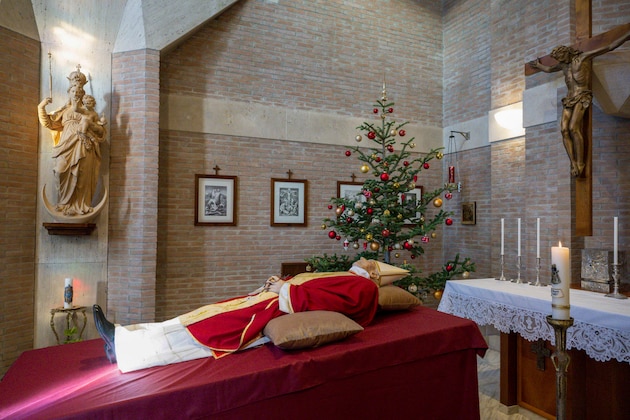DOMRADIO.DE: What upsets some people when corpses are laid out?
Christoph Kuckelkorn (Cologne undertaker): I think death doesn’t happen in our lives like that anymore. That’s something we’ve very much repressed, something we apparently no longer want to see outside of any feature films. In reality we don’t want it. Now we are suddenly confronted with death.
I actually think it’s a very nice thing that a deceased person is laid out again, that you can say goodbye again and that you can really understand the reality of death. Because in many cases, when you are connected to people, that is not so easy to do intellectually. You have to get something to help. And the best thing is to really get an impression.
DOMRADIO.DE: The fact that the dead are still laid out at home for three days is something that has largely disappeared from our lives today.
Kuckelkorn: Yes, but it comes back very strongly. In the last ten years this has become very popular again. Around 80-90 percent of the deceased are laid out again in our institute.
The Pope’s family is big, because that’s the public. With people who are in the public eye, there is often a great desire from people who feel closely connected to say goodbye personally.
You can see that now with the Pope, for example. We also experienced that with our Cardinal Meisner here in Cologne and you also experience it with show stars who are laid out openly again so that fans can say goodbye. I think that’s a pretty good way.
DOMRADIO.DE: A personal farewell is one thing. But isn’t it irreverent when these images of a corpse are then transported through the media?
Kuckelkorn: I don’t think so, because the people who felt connected to the Pope, for example, might not even have the opportunity to travel. So that means if I’m in South America right now and I don’t have the opportunity to come, then maybe this is just the tool I need.
I think it’s good to deal with it carefully, if the images that are created also convey the dignity of this moment. But I have absolutely no problem when a deceased is laid out that the media take it with them. Such is our time.
The media are the very important, connecting element for us at the moment. That’s just part of it. You can look away or switch off. You don’t have to look at it.
DOMRADIO.DE: You can also see pictures in which the private secretary of the emeritus pope kisses the hand of the deceased who is lying in state. That might seem strange to some.
Kuckelkorn: I don’t think so either, because seeing is one thing, feeling and closeness, having physical contact and realizing death again is something completely different.
We experience that so often that you stand at a coffin. The family then sees the deceased mother, grandmother, wife, wife and you have to touch to understand. That’s why a dignified touch, as is customary with the Pope, a kiss on the hand, is exactly the right way.
DOMRADIO.DE: In retrospect, millions of people said goodbye to Queen Elisabeth, who died in 2022, at the closed coffin. How is that decided?
Kuckelkorn: That’s something that’s firmly rooted in the protocol. It is part of the Vatican protocol to provide for an open laying out, just as it is provided for in the case of the death of an archbishop in Cologne, so that the population can say goodbye.
The deceased are also usually embalmed, i.e. prepared for a longer farewell. That didn’t happen with the Queen.
That’s why they were probably more careful and didn’t say goodbye publicly with an open coffin.
That’s what the Vatican protocol says, and all popes know it. You can of course choose a different path for yourself.
But everyone tolerated that and nobody restricted it, so it can be assumed that he was in agreement with it.
The interview was conducted by Uta Vorbrodt.
The original of this article “Benedict’s public laying out irreverent? Undertaker explains the reason” comes from DOMRADIO.DE.















